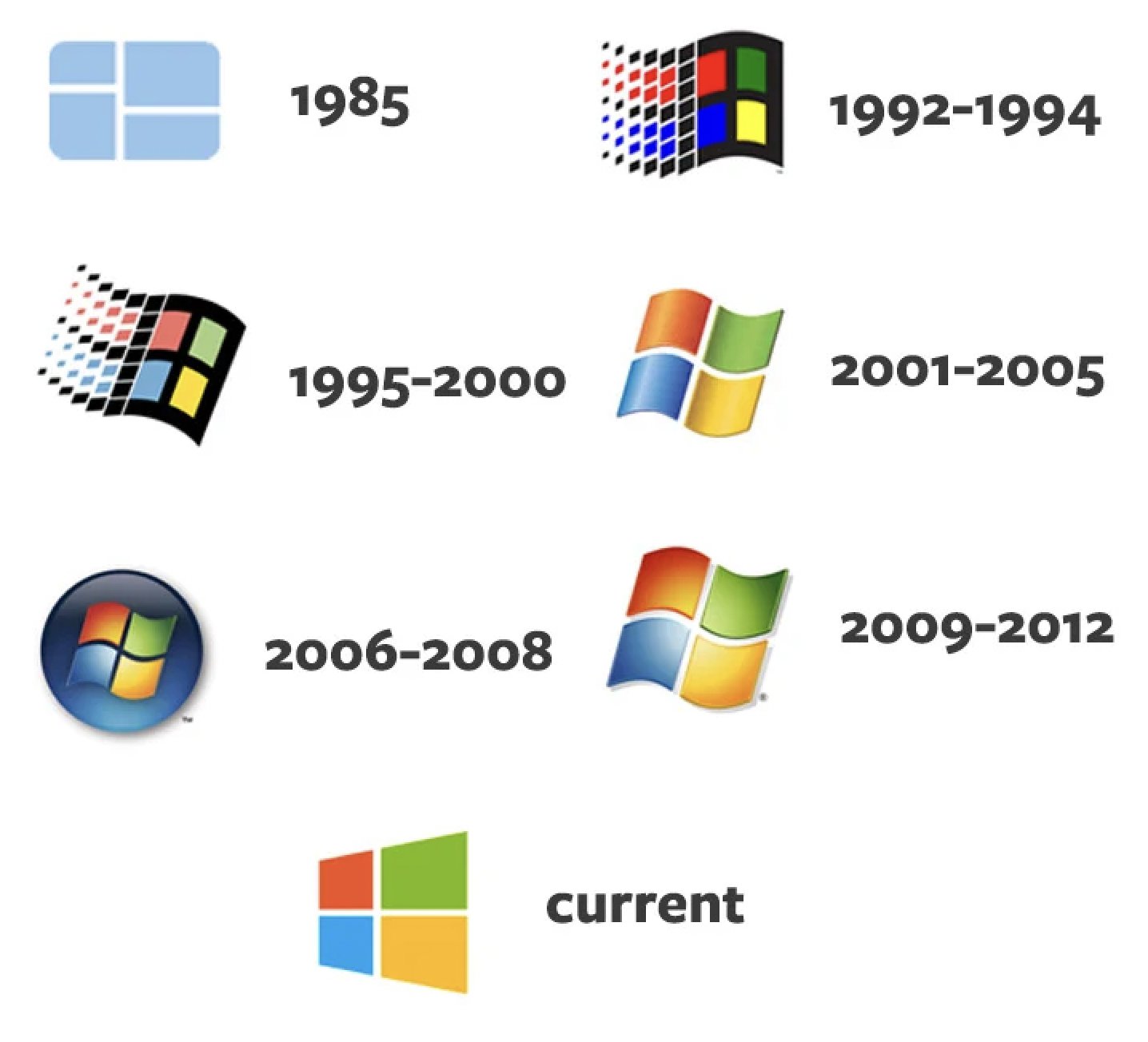
Introduction:
In the dynamic realm of technology, a logo serves as a visual ambassador, representing a company’s identity, values, and aspirations. Among the giants of the tech industry, Microsoft stands out not only for its groundbreaking products but also for the evolution of its iconic logo. Journey with us as we explore the fascinating story behind the Microsoft logo, a symbol that mirrors the company’s commitment to innovation and adaptability.
The Birth of a Logo:
Microsoft’s journey began in 1975, and so did its first logo. The original design featured a stylized letter “O” and “S” with bold lines and a distinctive, almost psychedelic color palette of brown, orange, and beige. While it captured the zeitgeist of the 1970s, it was clear that Microsoft’s visual identity was yet to find its definitive form.
The ’80s Revolution:
As the technology landscape evolved, so did Microsoft’s logo. The 1980s witnessed a significant transformation, with the company opting for a more corporate and professional look. The bold, uppercase typeface became a hallmark, accompanied by a stylized “o” that hinted at digital bits, emphasizing Microsoft’s role in the emerging world of personal computing.
The Window to the Future:
The 1990s brought a radical change with the introduction of the iconic Windows operating system. The new logo featured a stylized window, divided into four colorful panes, representing the integration and versatility of the Windows platform. This marked the beginning of an era where Microsoft’s logo would become synonymous with its flagship product.
Embracing Simplicity in the 21st Century:
As we entered the new millennium, design trends shifted towards simplicity and minimalism. Microsoft, true to its commitment to innovation, revamped its logo in 2012. The new design featured a clean, square window with a grid of four squares, representing Microsoft’s diverse range of products and services. The color palette was simplified to reflect a more modern and cohesive visual identity.
The Fluent Design Era:
In 2017, Microsoft introduced the Fluent Design System, an evolution of its design language that emphasized depth, motion, and simplicity. This shift was reflected in the updated logo, which retained the four-pane window but embraced a more three-dimensional and dynamic appearance. The subtle use of gradients and shadows added a touch of depth, aligning with the company’s focus on immersive and intuitive user experiences.
The Future: A Dynamic Canvas
As we look toward the future, Microsoft’s logo is likely to continue evolving, keeping pace with technological advancements and design trends. With the advent of mixed reality, artificial intelligence, and cloud computing, the logo will serve as a dynamic canvas, reflecting the company’s commitment to innovation and its role in shaping the future of technology.
Conclusion:
The Microsoft logo is not just a symbol; it’s a visual chronicle of the company’s evolution over the decades. From the experimental designs of the ’70s to the sleek and modern visuals of today, each iteration tells a story of innovation, adaptability, and a commitment to staying at the forefront of technology. As Microsoft continues to shape the digital landscape, one can only anticipate the exciting transformations that await in the next chapter of its logo’s journey.
